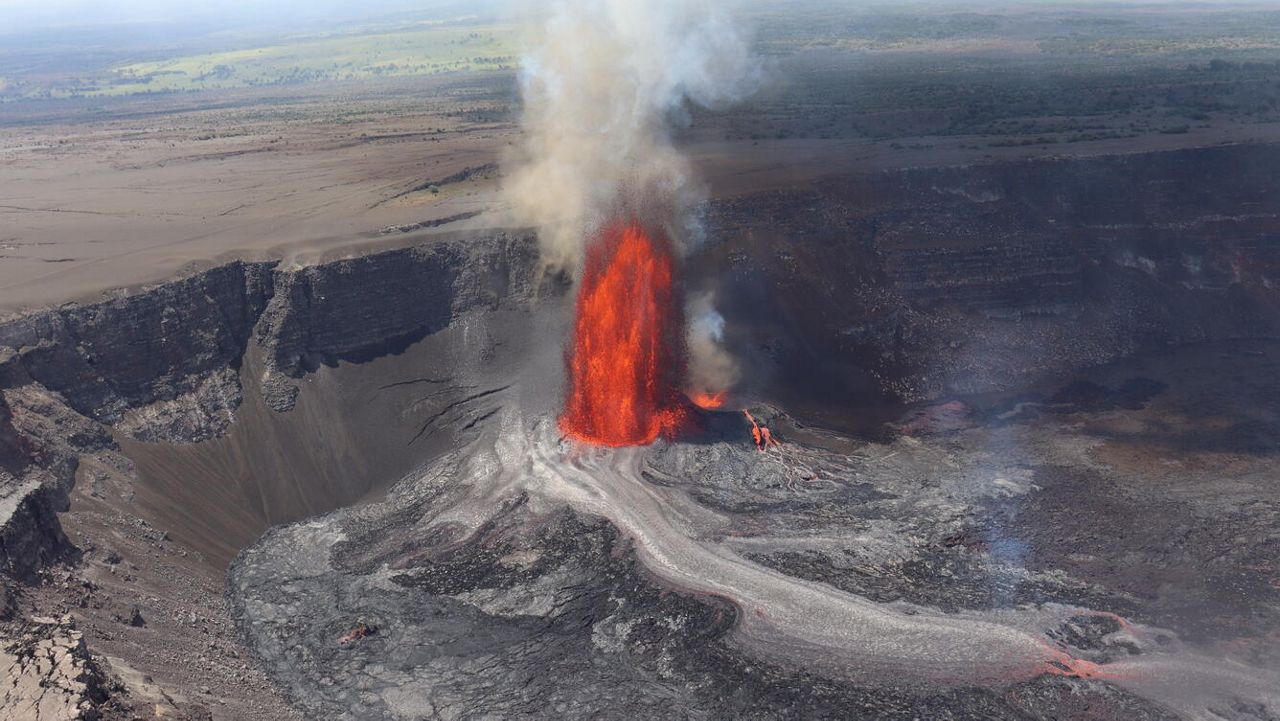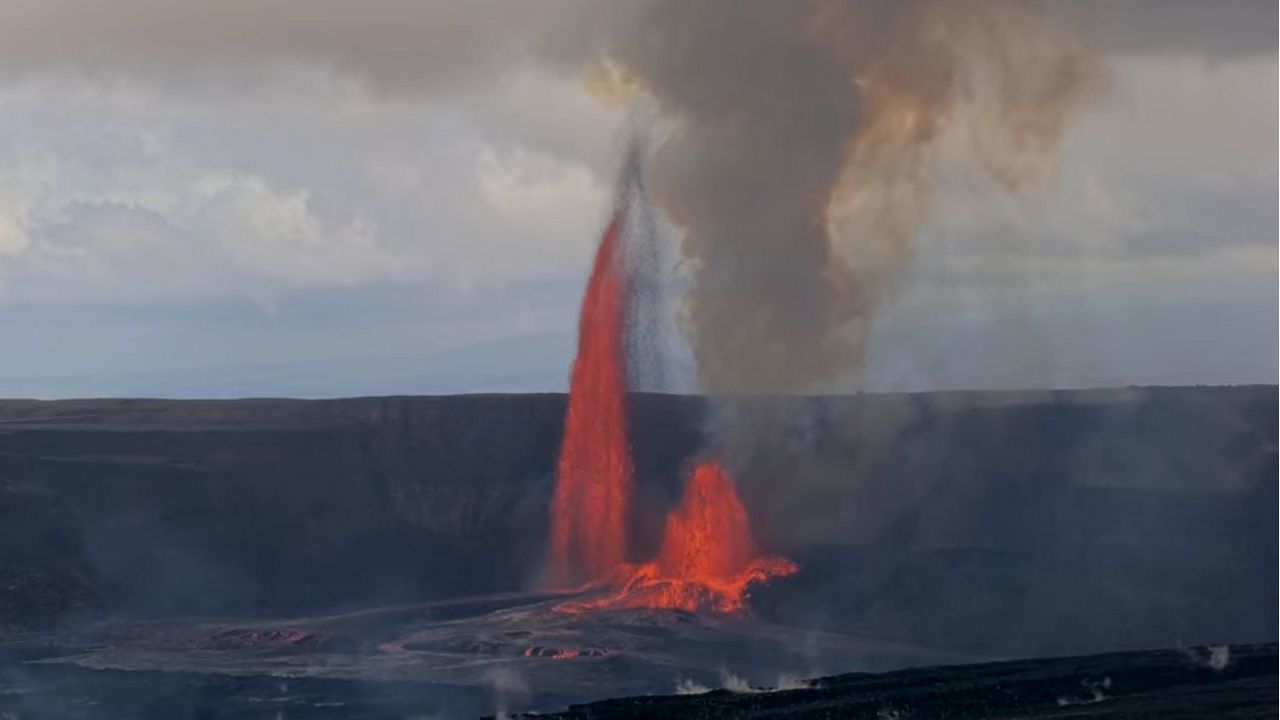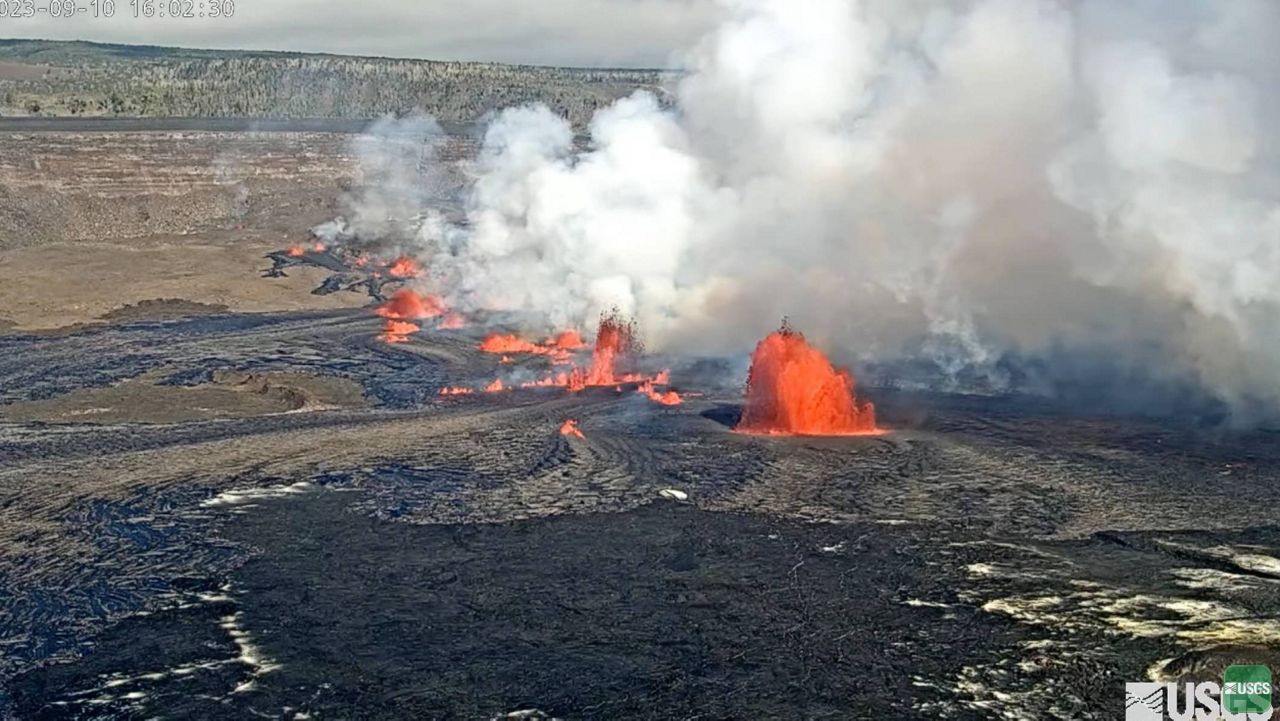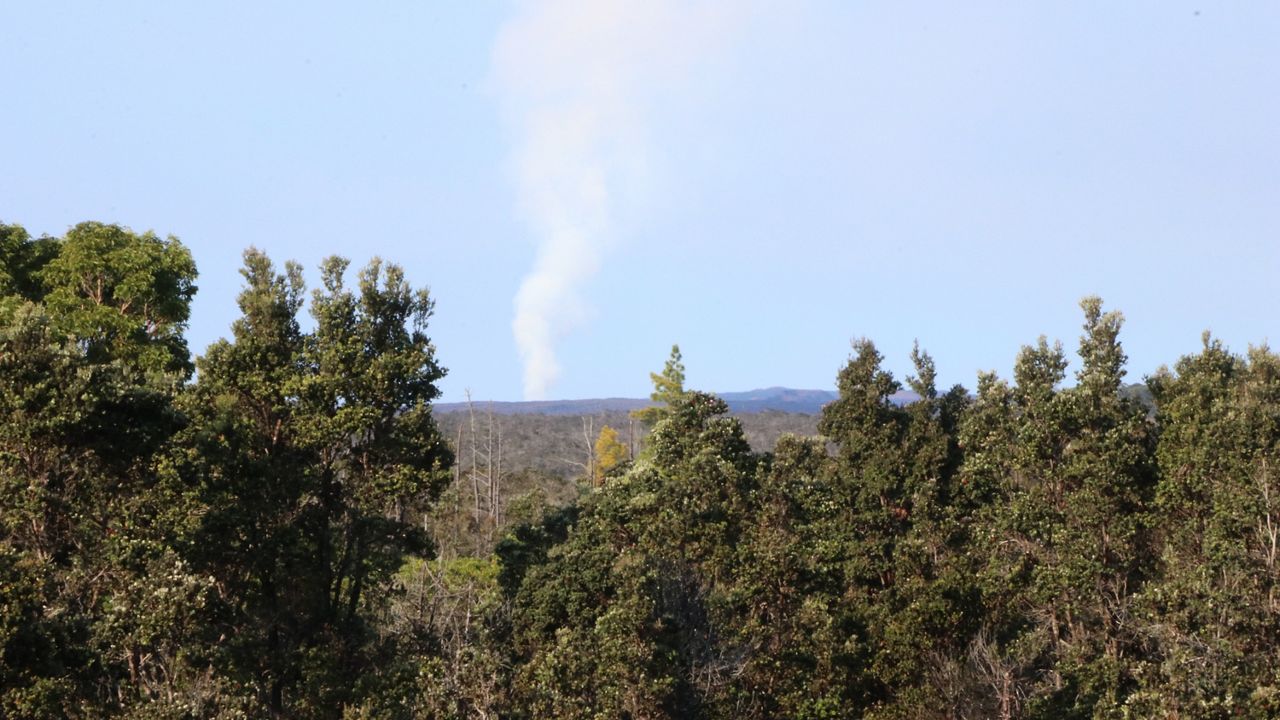The Hawaiian Volcano Observatory reported Kilauea volcano began its 16th episode on Monday at 10:57 p.m., continuing the ongoing eruption. High lava fountains started to emerge at 10:24 a.m. on Tuesday, reaching heights of 700 feet.
But at 12:03 p.m. on Wednesday, Episode 16 ended when high fountaining at the south vent stopped. Fountains from the south vent sustained heights of 600-700 feet for 23 hours, then dropped to less than 300 feet at 9:50 a.m. Wednesday.
The current eruption, which began on Dec. 23, 2024, has already produced 15 episodes of lava fountaining, each separated by brief pauses in activity. These spectacular bursts of lava originate from two vents within the Halemaʻumaʻu crater: the north vent and the south vent.
Before Episode 16 began, weak spattering was seen coming from the north vent at 5:20 p.m. on Monday. Around 6 p.m., spattering from the north vent became steady and increased to produce a lava fountain that reached about 30 feet high. In the north vent, the lava level gradually rose and eventually overflowed from the north vent cone onto the floor of Halemaʻumaʻu crater. At the south vent, small spatter fountains were first seen by field crews at 8:30 a.m. on Tuesday, but they were likely active deeper in the vent before this time. Activity at the south vent increased around 10:12 a.m.
The high fountain phase of Episode 16 began at 10:24 a.m. on Tuesday, about 12 hours after the start of the episode. Fountaing from the south vent rapidly increased to over 200 feet in height by 10:40 a.m. and then again to over 700 feet by 10:50 a.m. Low dome fountaining and overflows continued from the north vent.
During Episode 16, lava flows covered more than 50% of the floor of Halemaʻumaʻu within the southern part of Kilauea caldera.
HVO noted that emissions of SO2 gas are elevated. During recent episodes, SO2 emissions have reached 50,000 tonnes per day or more, with similar amounts expected to accompany any high fountaining activity that occurs during Episode 16. Currently, forecasts show winds at the summit will be weak, which will allow the plume of gas to spread around the summit of Kilauea.
Also, HVO said weak winds resulted in the accumulation of Pele's hair and tephra in closed areas of Hawaii Volcanoes National Park and on Highway 11 between mile marker 35 and 37. For more information about Pele’s hair, click here.
Editor's note: This story has been updated with information via HVO about the start of high fountaining and the end of Episode 16. (April 2, 2025)









